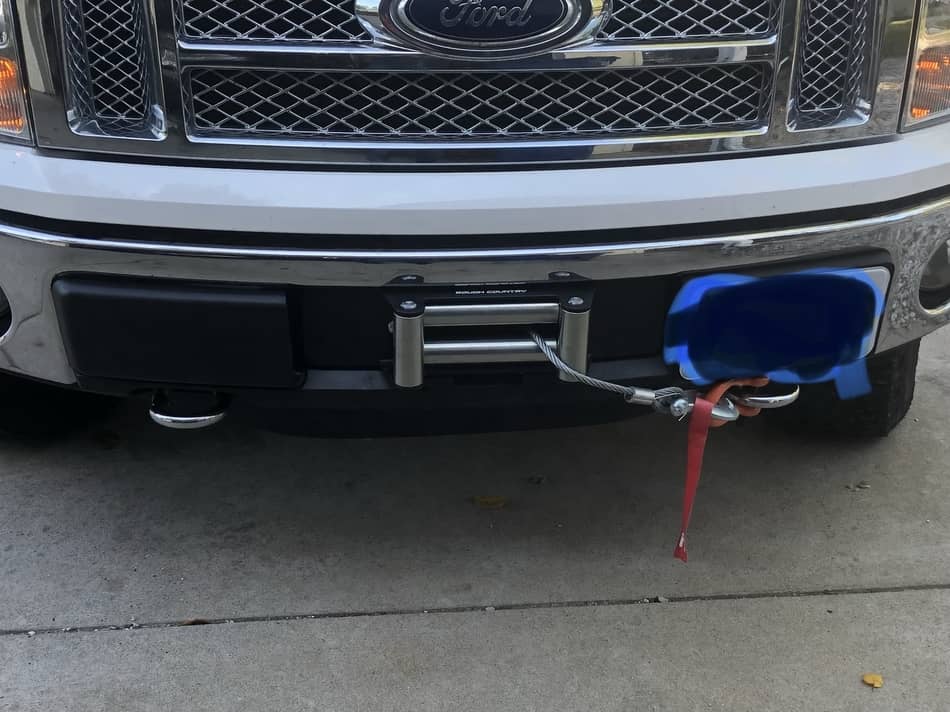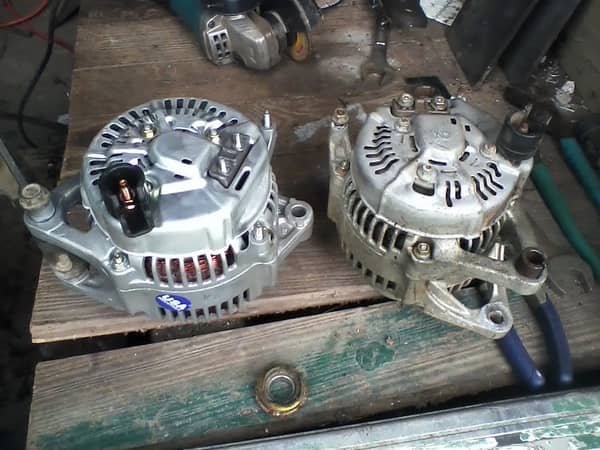If you want your truck to be able to get in and out of tough places or to rescue your friends, you have likely considered buying yourself a winch. A winch is an excellent addition for both work and play and can be a lifesaver in a tough situation. However, a winch requires some special consideration when power is involved.
Will a winch drain my battery? When not in use, a winch will not drain your battery. It has the potential to drain the battery if it draws more amps than your battery can handle. If you plan to use your winch frequently, you should consider installing a second battery.
Read on to find out to make sure you will be able to use your winch without ruining your battery.

How Long Will My Winch Run on a Battery?
In a perfect scenario, your battery will not be drained when the winch is running. While the winch is being operated, your vehicle will be running. Because of this, power is continuously pushed into your battery via the alternator, preventing drainage.

However, some situations are not ideal. If your alternator has failed or you are otherwise unable to run the motor while winching, you will have 1 to 2 minutes of operating time on a fully charged battery. This will vary depending on your battery’s capacity, age, and condition, as well as the amperage of your winch.
If you notice a drain on the battery without using the winch, there is a problem with the battery or the winch that needs to be addressed immediately. It is essential for you not only to correctly and regularly maintain and check your vehicle but also know the limitations and needs of the equipment you use.
How Many Amps Does a Winch Draw?
Knowing the amps that your winch draws is vital in being able to operate it safely. If the winch needs more power than your battery can create, you will drain it almost immediately. You risk damaging the battery, the alternator, and the winch itself.
However, not all winches are made equally. The amps they will pull vary between the weight ratings, whether you are using a 12-volt or 24-volt system, as well as the manufacturer. Always be sure to check manufacturer details and user manuals for the specifics on your winch and never use batteries that are not rated for that use.
Do I Need a Second Battery for a Winch?
Batteries and alternators experience a lot of demand for power when winching, especially in off-road situations. One way to get around battery issues is to have a second battery installed in your vehicle. A dual battery system supplies enough power to run your basic systems and to operate your winch.

Unfortunately, this isn’t as simple as finding a spot to stick it in the engine compartment. While some might suggest jumper cables to hook up a battery for winching, this is NOT safe. Instead, look for an isolator kit (link to Amazon) that will fit the amperage you’re going to be using.
Many people recommend that if you are going to install a second battery or do some heavy winching, you should upgrade your alternator. The power draw demands can often be too much for stock alternator designs, causing them not to charge the battery or to fail. If you are working or off-roading, neither is a good situation, so it’s best to spend the money on the upgrade rather than call a tow truck.
Which Battery Do I Connect My Winch To?
If your vehicle is already equipped with a dual battery, as are many diesel models, the batteries act as one. This means that whichever battery is more convenient to hook to should be your choice. For heavy winching, we suggest that you make sure the battery you use is a deep cycle battery, as this will handle the strain better than others.
If you have an isolator, as we mentioned above, your primary battery will be your winch battery. This is done, so the alternator has a direct line to the battery receiving the most draw and stress. Use the guide below to safely and securely wire your winch to this battery.
How Do I Hook a Winch to a Battery?
After you have your winch and the proper battery or batteries, you’re ready to connect the power. Let’s look at the steps needed to get you hooked up correctly, but keep these few things in mind:
- Use the proper crimp connectors and heat shrink waterproof seals around connectors. This will help keep out moisture that can cause corrosion or short. Electrical tape is not good enough.
- Do not allow cables that contact the battery terminals to connect to each other. Always remove and connect them one at a time as the instructions demand to avoid accidental shorts that could ruin a battery.
- Never make modifications like this with the vehicle running or auxiliary power turned on. Be sure to remove the keys from the ignition for safety.
- Use the proper cables for your winch and battery. Using cables that are too small or too large of a gauge can cause problems with power and even fires. Often manufacturers will have kits like this one.
Step-by-Step Instructions for Hooking Up Your Winch
- Mount your new battery in the engine compartment. If you are using an auxiliary battery with an isolator kit, be sure to follow the instructions. Failure to do so can cause a short or even a fire.
- Using the manufacturer instructions, securely mount your winch. Be sure to use any mounting plates required. The force created by the winch motor is incredible, and an improper mount can cause extreme damage or injury.
- Find a path from your battery to your winch. If you can, follow an existing wiring harnesses. These will often show you the shortest and safest path to the mounting location. Be sure to avoid hot or moving parts.
- Loosely run the cables along the intended path, but do not secure them yet.
- Disconnect the battery cables from the battery terminals, negative terminal first.
- Install the isolator kit and battery at this time if you are using an auxiliary battery.
- Connect your cables to your winch.
- If your winch will be operated inside of the vehicle by a switch, install the switch and route those cables.
- Secure the cables to an existing wiring harness or frame using cable ties, starting at the winch first.
- If your cables are too long, trim them and install new connectors for the length you need.
- Once all the wiring kits and accessories are installed, you are ready to hook up the power. Connect the positive cable first, then the negative cable.
After the installation is finished, turn on your truck and give the winch a test run. Remember to follow all safety advice when using the winch to avoid damage or injury.
Here are two videos that will help you install your own winch on your truck:
If you have a trailer winch you plan on using, your install will be slightly different. You will need a wiring kit that runs to the back of your truck and hooks into the winch cables with a coupler. The concept and steps are mostly the same, except the cables are much longer and come with a quick connect/disconnect plug.
Conclusion
In conclusion, it is safer for your vehicle and equipment to switch to a dual battery system if you’ll be doing any heavy winching. Using an isolator kit can accomplish this safely and easily, keeping your chances of running out of juice to a minimum. The less you have to worry about when you need your equipment to work, the better.
If you’re thinking of different ways to accessorize your truck or make it more functional, consider checking out my recommended accessories page. I spent a good amount of time picking out mods that can be useful for most pickup trucks.

